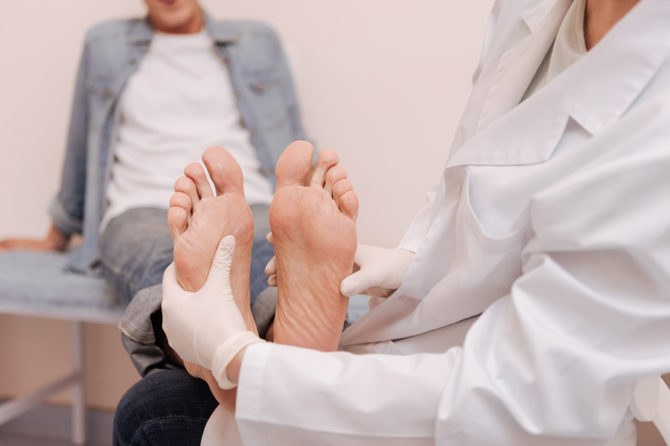
Foot Ulcer FAQs
If you’re diabetic, you’ve probably heard about diabetic ulcers. Poor health, injury, and lack of self-care can lead to serious ulcerations on the feet that could necessitate drastic action, such as an amputation. But what is an ulcer? How do they form? And how do you avoid them? Keep reading. We’ve got your answers.
What is a foot ulcer?
In the simplest terms, an ulcer is a sore or an open wound. Minor foot ulcerations affect only the top layers of skin. Deep ulcerations may extend through the skin into the tissue or bone underneath. The area will appear as a red “crater” with a border of toughened skin surrounding it.
How does a foot ulcer form?
Foot ulcers usually form from a small abrasion or cut that goes unnoticed or untreated. Over time, as shoes and everyday activities put pressure and friction on this spot, it will open into an ulcer.
Who gets foot ulcers?
Diabetics and other persons with neuropathy or circulation issues are at the highest risk for foot ulcers. Neuropathy may cause a cut to go unnoticed, growing into an ulcer. Circulation issues prevent blood flow and oxygenation of the tissues that would help with healing. Diabetic patients often suffer from circulation issues and neuropathy, which makes them the highest at-risk group.
How does a foot ulcer heal?
Due to their placement—often on the bottom and sides of the foot—ulcers take a long time to heal and can easily become infected. An ulcer caught in the early stages in a person with few risk factors or complications can heal itself with proper treatment in three to six weeks. Deep ulcers and ulcers in people with risk factors and other health conditions may take up to 20 weeks to heal. Surgical intervention may be necessary, especially if the ulcer becomes infected.
When do foot ulcers become dangerous?
Ulcers are particularly dangerous because of the high risk of infection. In an area of the body that’s already having trouble healing itself, an infection can spell big trouble and require surgical intervention. Infections can become abscesses (pus pocket), bone infections (osteomyelitis), and even gangrene (dead, darkened tissue).
What are the treatment options?
The number one treatment for foot ulcers is off-loading or staying off the affected foot. Your podiatrist may also recommend wearing shoe inserts, compression wraps, foot braces, casts, or diabetic shoes. Ulcers can be debrided, which removes the dead skin and cleans the wound. An infected foot ulcer may be treated with antibiotics or more drastic action may be taken, such as cutting away infected tissue. In a worst-case-scenario, amputation may become necessary.
How do I avoid getting a foot ulcer?
Avoiding foot ulcers is easy if you perform a daily foot inspection, maintain proper foot hygiene, and wear properly fitting socks and shoes. Keep an eye on corns, calluses, cuts, cracks, and abrasions.
If you or a loved one are suffering from or suspect a foot ulcer, call the FAAWC immediately. Early treatment is key to a shorted healing time and avoiding extreme outcomes such as amputation.
